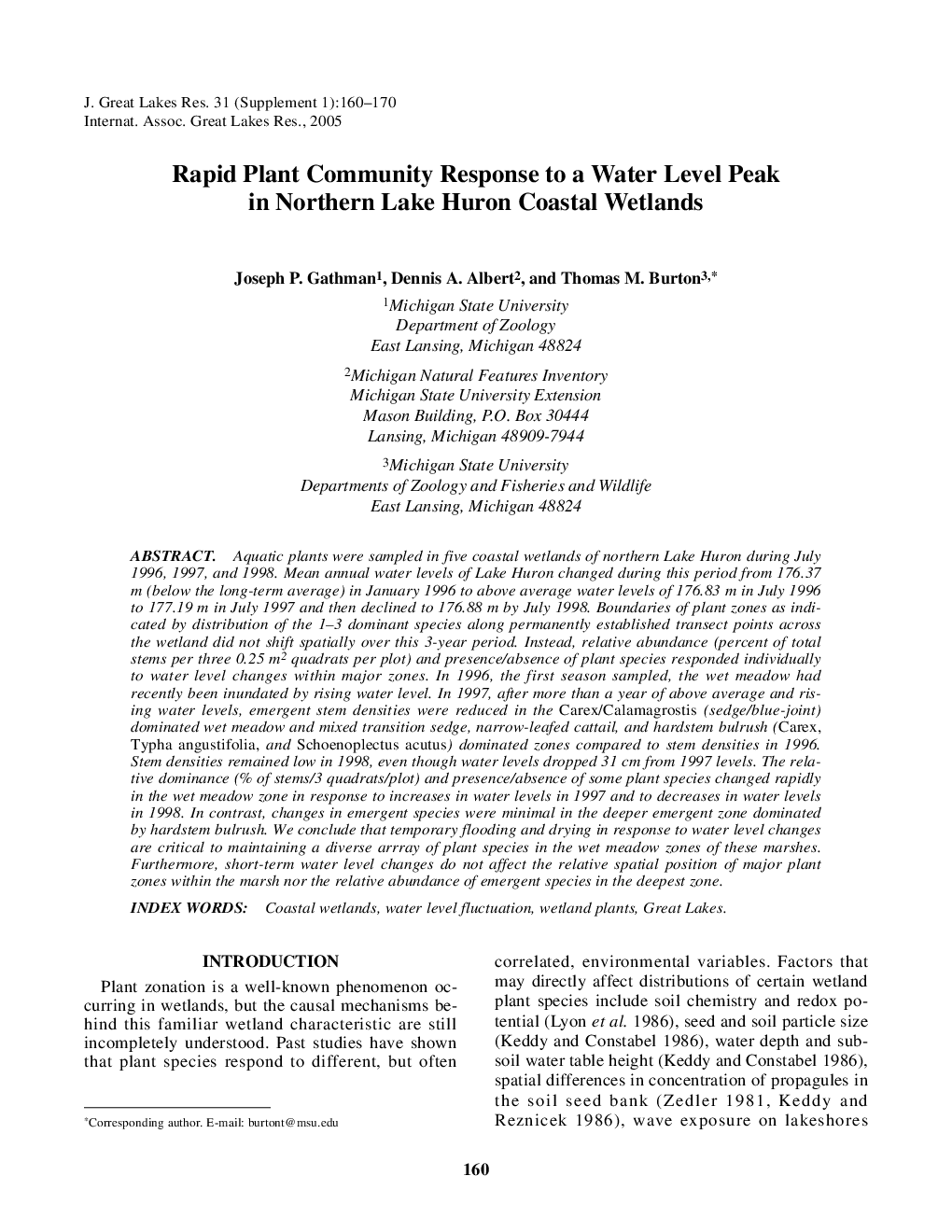| Article ID | Journal | Published Year | Pages | File Type |
|---|---|---|---|---|
| 9450285 | Journal of Great Lakes Research | 2005 | 11 Pages |
Abstract
Aquatic plants were sampled in five coastal wetlands of northern Lake Huron during July 1996, 1997, and 1998. Mean annual water levels of Lake Huron changed during this period from 176.37 m (below the long-term average) in January 1996 to above average water levels of 176.83 m in July 1996 to 177.19 m in July 1997 and then declined to 176.88 m by July 1998. Boundaries of plant zones as indicated by distribution of the 1-3 dominant species along permanently established transect points across the wetland did not shift spatially over this 3-year period. Instead, relative abundance (percent of total stems per three 0.25 m2 quadrats per plot) and presence/absence of plant species responded individually to water level changes within major zones. In 1996, the first season sampled, the wet meadow had recently been inundated by rising water level. In 1997, after more than a year of above average and rising water levels, emergent stem densities were reduced in the Carex/Calamagrostis (sedge/blue-joint) dominated wet meadow and mixed transition sedge, narrow-leafed cattail, and hardstem bulrush (Carex, Typha angustifolia, and Schoenoplectus acutus) dominated zones compared to stem densities in 1996. Stem densities remained low in 1998, even though water levels dropped 31 cm from 1997 levels. The relative dominance (% of stems/3 quadrats/plot) and presence/absence of some plant species changed rapidly in the wet meadow zone in response to increases in water levels in 1997 and to decreases in water levels in 1998. In contrast, changes in emergent species were minimal in the deeper emergent zone dominated by hardstem bulrush. We conclude that temporary flooding and drying in response to water level changes are critical to maintaining a diverse arrray of plant species in the wet meadow zones of these marshes. Furthermore, short-term water level changes do not affect the relative spatial position of major plant zones within the marsh nor the relative abundance of emergent species in the deepest zone.
Related Topics
Physical Sciences and Engineering
Earth and Planetary Sciences
Earth and Planetary Sciences (General)
Authors
Joseph P. Gathman, Dennis A. Albert, Thomas M. Burton,
